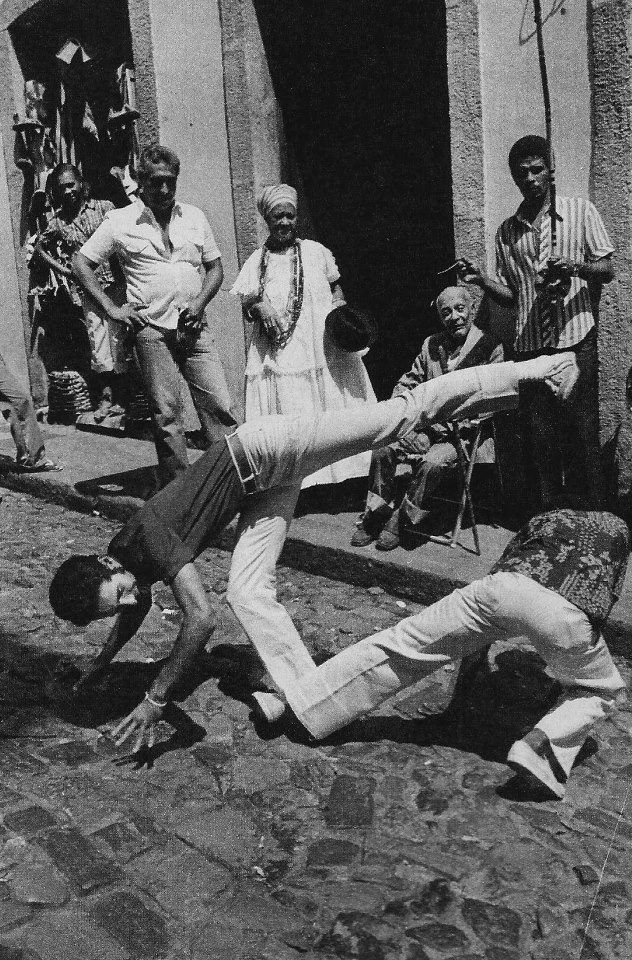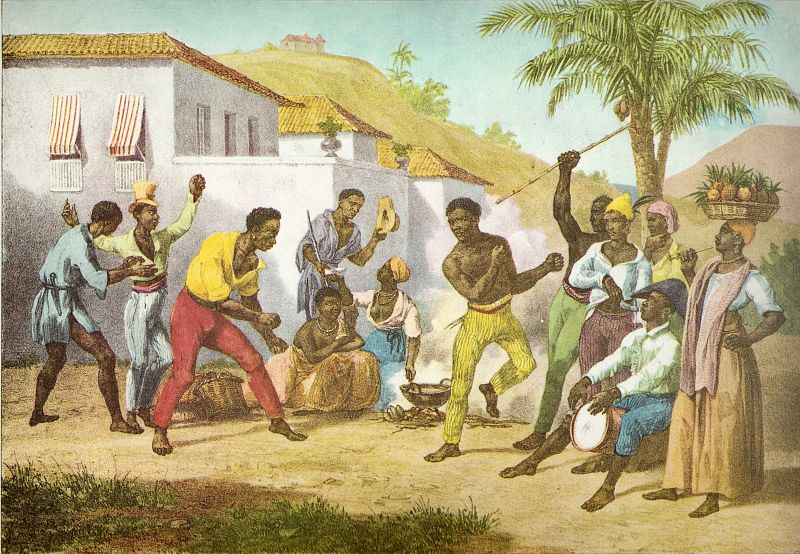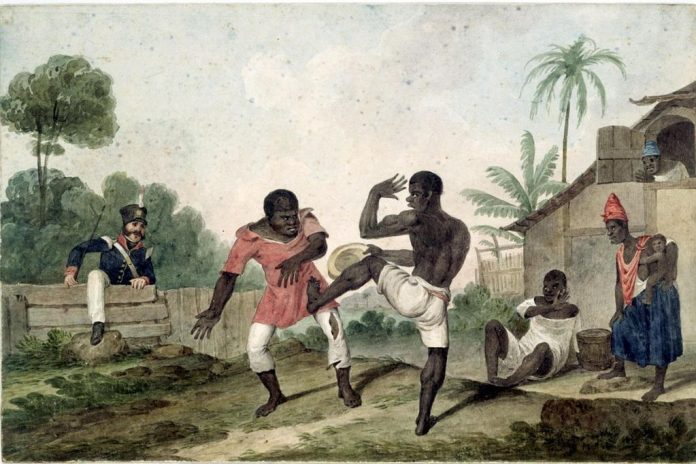Capoeira is an art form that involves movement, music, and elements of practical philosophy. One experiences the essence of capoeira by ‘playing’ a physical game called jogo de capoeira (game of capoeira) or simply jogo. During this ritualised combat, two capoeiristas (players of capoeira) exchange movements of attack and defence in a constant flow while observing rituals and proper manners of the art.
Both players attempt to control the space by confusing the opponent with feints and deceptive moves. During the jogo, the capoeiristas explore their strengths and weaknesses, fears and fatigue in a sometimes frustrating, but nevertheless enjoyable, challenging and constant process of personal expression, self-reflection and growth.
The speed and character of the jogo are generally determined by the many different rhythms of the berimbau, a one-string musical bow, which is considered to be the primary symbol of this art form. The berimbau is complemented by the pandeiro (tambourine), atabaque (single-headed standing drum), agogo (double bell), and reco-reco (grooved segment of bamboo scraped with a stick) to form a unique ensemble of instruments. Inspiring solos and collective singing in a call-and-response dialogue join the hypnotic percussion to complete the musical ambiance for the capoeira session.



Capoeira originates from Brazil. In the 16th century when Portuguese settlers discovered Brazil, their main aim was to suppress Brazillian Indians in order to use them as slaves. However, this did not all go to plan as the natives either escaped or died in captivity. The Portuguese next plan was to import slaves over from Africa.
The African slaves were comprised into three different groups and it is believed by some that it was the Bantu group from Angola who formed what is now known as Capoeira. In the 17th century when the Dutch controlled certain parts of Brazil, they had several large disputes with the Portuguese and the slaves saw this as their chance to escape, which some of them managed to do. They then settled in small self sufficient quilombos (villages) deep in the Brazillian forests where they could live in peace away from their oppressors. However, the quilimbos did not remain a secret for long, and the liberated africans had to constantly defend themselves from attacks. It is believed that some capoeira evolved from this and was used as a form of self defence.
Capoeira was outlawed in the late 19th century by King Dom Joao VI who had recently arrived in Brazil. He believed that if he wanted to conquer the Africans he must first destroy their culture and sense of community.
It is believed that in order to overcome this law, the African slaves developed their fighting style and disguised it as a dance so that the slave owners would be completely oblivious to the fact that the slaves were actually training for combat.
During the 1930’s Capoeira was to under go several notable changes. Firstly capoeira was recognised as an actual sport/martial art by the Brazilian government. It was then that the first capoeira academy was set up in Salvador, where capoeira “Regional” was taught. Capoeira ‘Regional’ was created in reaction to the sloppy street Capoeira of the twenties by the legendary Mestre Bimba and is a style of capoeira that emphasizes on the fighting aspects of the art. Mestre Bimba wanted to legitimize Capoeira as a form of self-defence and an athletic game, improving the technical quality of movements and creating training sequences which were a lot faster and more aggressive than the original Angola style. By 1941 there were schools teaching either Angola or Regional, or even both, all over Brazil. Then in 1974, capoeira had become so popular that Brazil claimed it as it’s national sport.

Lorem ipsum dolor sit amet, consectetur adipiscing elit. Ut elit tellus, luctus nec ullamcorper mattis, pulvinar dapibus leo.
Kindly fill the form below to register your interest to learn capoeira.